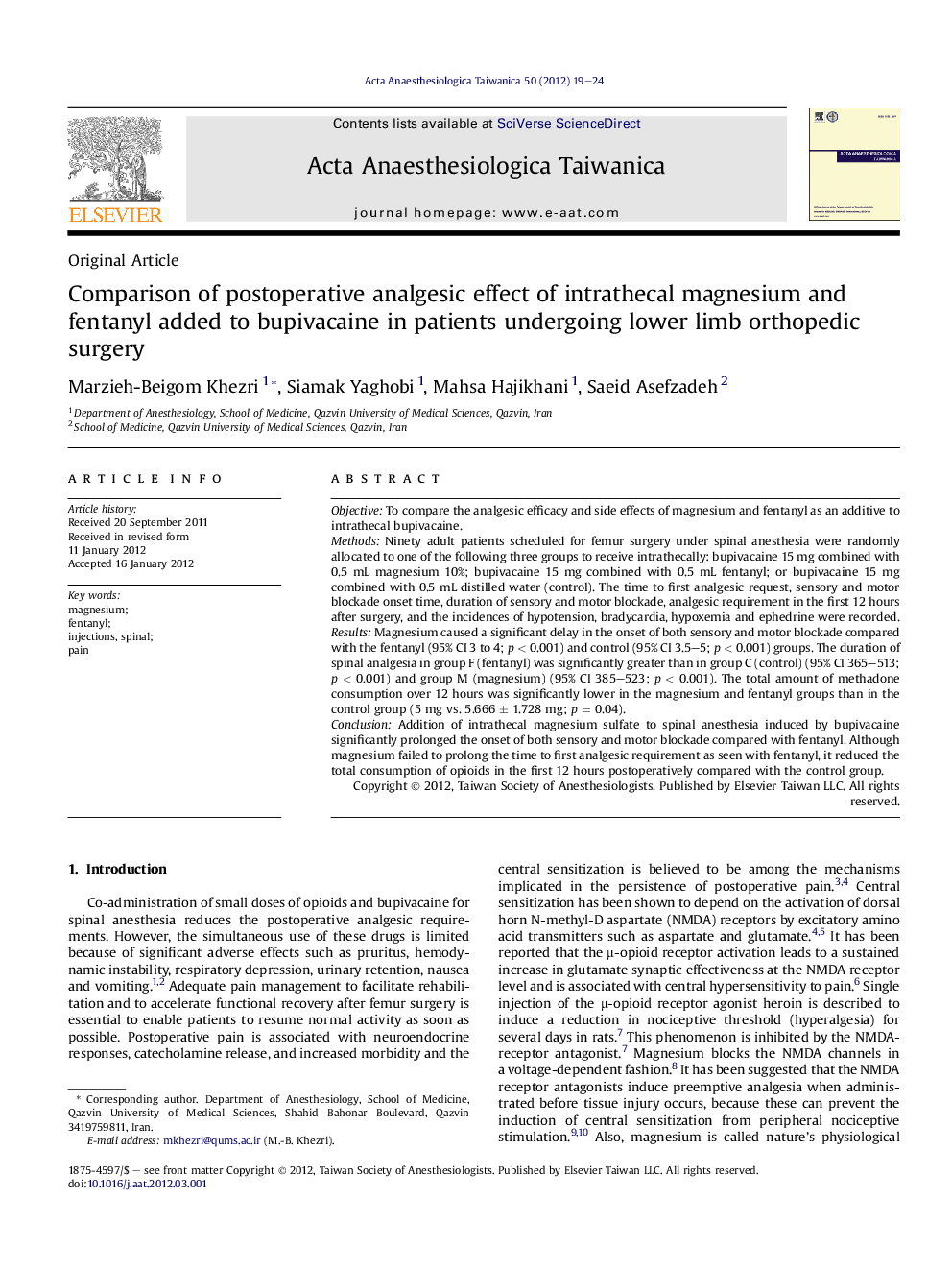| Article ID | Journal | Published Year | Pages | File Type |
|---|---|---|---|---|
| 2741582 | Acta Anaesthesiologica Taiwanica | 2012 | 6 Pages |
ObjectiveTo compare the analgesic efficacy and side effects of magnesium and fentanyl as an additive to intrathecal bupivacaine.MethodsNinety adult patients scheduled for femur surgery under spinal anesthesia were randomly allocated to one of the following three groups to receive intrathecally: bupivacaine 15 mg combined with 0.5 mL magnesium 10%; bupivacaine 15 mg combined with 0.5 mL fentanyl; or bupivacaine 15 mg combined with 0.5 mL distilled water (control). The time to first analgesic request, sensory and motor blockade onset time, duration of sensory and motor blockade, analgesic requirement in the first 12 hours after surgery, and the incidences of hypotension, bradycardia, hypoxemia and ephedrine were recorded.ResultsMagnesium caused a significant delay in the onset of both sensory and motor blockade compared with the fentanyl (95% CI 3 to 4; p < 0.001) and control (95% CI 3.5–5; p < 0.001) groups. The duration of spinal analgesia in group F (fentanyl) was significantly greater than in group C (control) (95% CI 365–513; p < 0.001) and group M (magnesium) (95% CI 385–523; p < 0.001). The total amount of methadone consumption over 12 hours was significantly lower in the magnesium and fentanyl groups than in the control group (5 mg vs. 5.666 ± 1.728 mg; p = 0.04).ConclusionAddition of intrathecal magnesium sulfate to spinal anesthesia induced by bupivacaine significantly prolonged the onset of both sensory and motor blockade compared with fentanyl. Although magnesium failed to prolong the time to first analgesic requirement as seen with fentanyl, it reduced the total consumption of opioids in the first 12 hours postoperatively compared with the control group.
